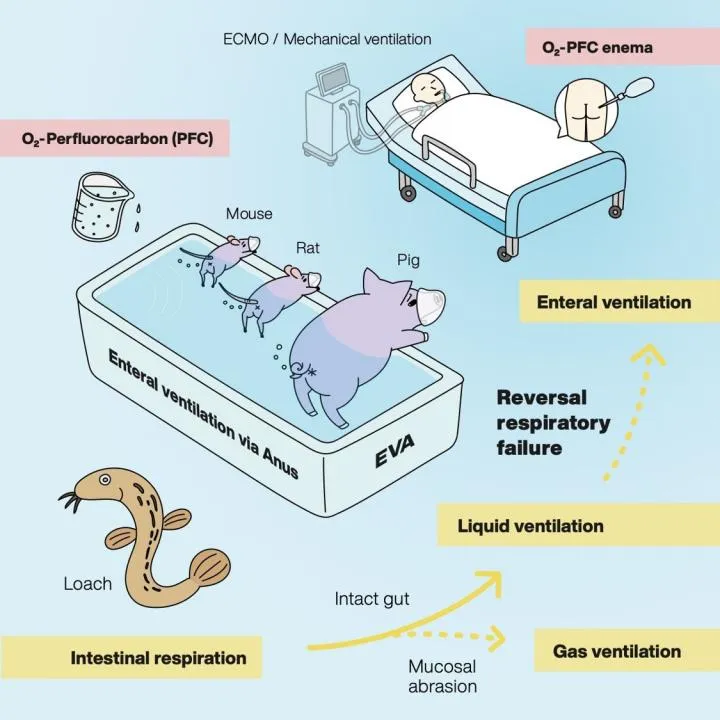For many animals, respiration involves breathing in oxygen and breathing out carbon dioxide via either lungs or gills. However, there are several exceptions – loaches, catfish, and orb-weaving spiders are all known to be able to breathe through their guts when the supply of oxygen in their environment gets scare.
Now, researchers at Tokyo Medical and Dental University (TMDU) have shown that oxygen can be delivered into the bloodstreams of mice, rats and pigs via their anuses. The technique, known as enteral ventilation, or EVA, may sound a little odd but it could one day be used to support the oxygen supply of human patients with severe respiratory conditions, they say.

“The rectum has a mesh of fine blood vessels just beneath the surface of its lining, which means that drugs administered through the anus are readily absorbed into the bloodstream,” said first author Ryo Okabe. “This made us wonder whether oxygen could also be delivered into the bloodstream in the same way. We used experimental models of respiratory failure in mice, pigs and rats to try out two methods: delivering oxygen into the rectum in gas form and infusing an oxygen-rich liquid via the same route.”
The researchers deprived the animals of oxygen and then administered oxygen enemas to them, either in gas form or via perfluorcarbons, or PFCs – liquids that can absorb large amounts of oxygen and carbon dioxide and are often used as a blood substitute or to assist the ventilation of premature babies.
Read more about medicine:
- The history of medicinal drugs helps explain our relationship with them today
- Why personalised medicine is coming, and how it’s going to help us beat disease
- Should medicine be gendered
In both cases oxygen levels in the animals' blood increased, enabling them to survive for longer periods. The team also found increased degrees of oxygenation in the animals’ cells and no sign of harmful effects despite small amounts of PFC being absorbed along with the oxygen.
“Patients in respiratory distress can have their oxygen supply supported by this method to reduce the negative effects of oxygen deprivation while the underlying condition is being treated,” said co-author Prof Takanori Takebe. “Enteral ventilation showed great promise in our asphyxia-like experimental model. The next steps will be to test safety of the EVA approach with more profound mechanistic understanding by which it works; and to establish effectiveness in humans in a clinical setting.”
